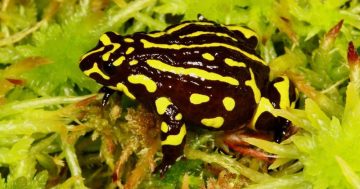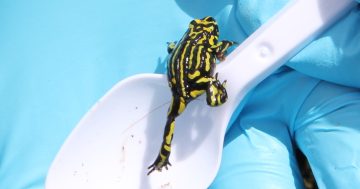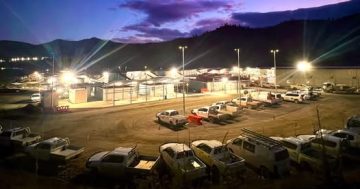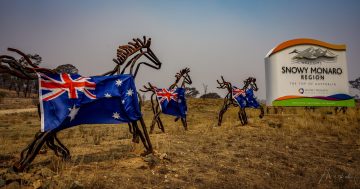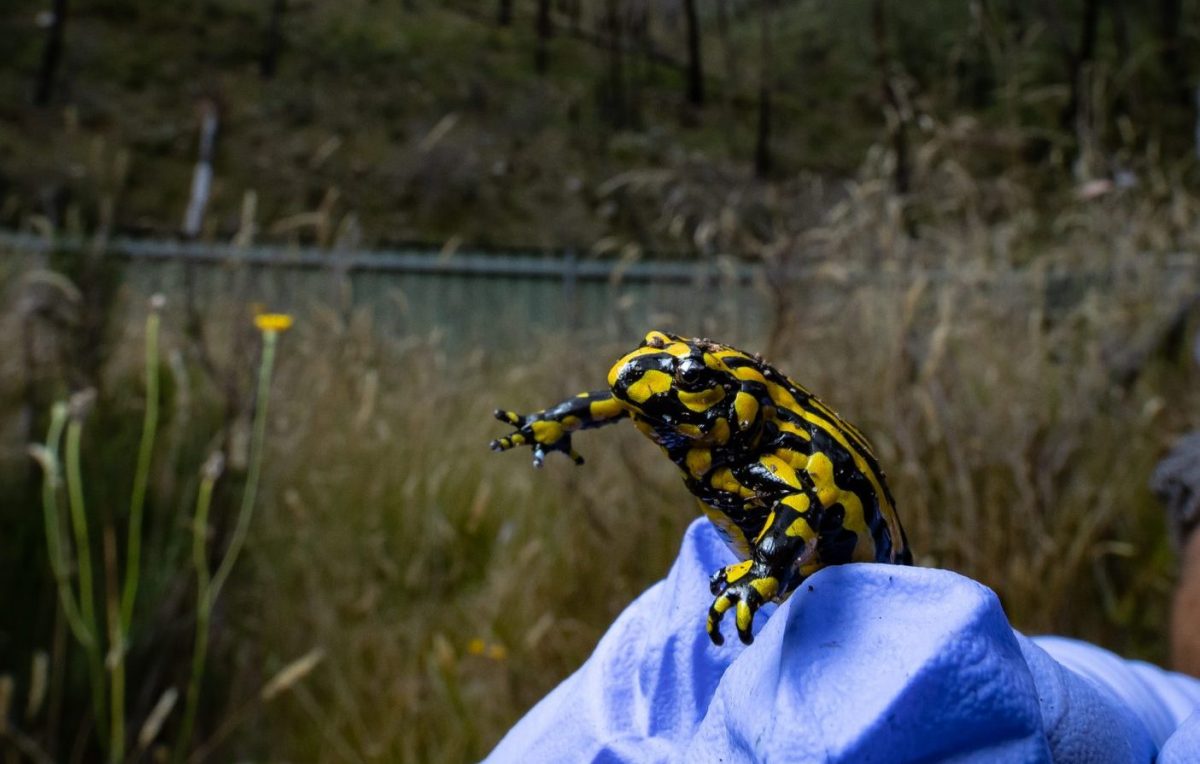
Look into his little eyes. Photo: Alex Pike, NSW National Parks.
One of Australia’s most iconic frog species is celebrating a milestone in the Snowy Mountains.
More than 3400 eggs of the critically endangered southern corroboree frog have been released in Kosciuszko National Park – the largest number of eggs since an annual program began to bring the species back from the brink of extinction.
The frogs are about the size of a paperclip (2.5 to 3 cm) and would be easy to miss under the logs and around the bogs of subalpine NSW and ACT if it weren’t for their vivid yellow and black striped colouring – a sure ‘don’t eat’ sign for predators because, unlike other frog species, the corroboree frogs make their own poison rather than extract it from what they eat.
Australia is home to two species – the southern corroboree frog, restricted to altitudes between 1300 and 1760 metres above sea level in the Mount Kosciuszko National Park, and the northern corroboree frog, within the Brindabella and Fiery Ranges in NSW and ACT.
Both are critically endangered due mainly to a fungal disease called chytridiomycosis, which is responsible for a decline in frog species worldwide. It’s thought to have been introduced to Australia by the African clawed frog, which is used in a variety of research laboratories.
Spread through water or direct contact with other frogs, the fungus attacks the keratin in the skin, eventually killing the infected.
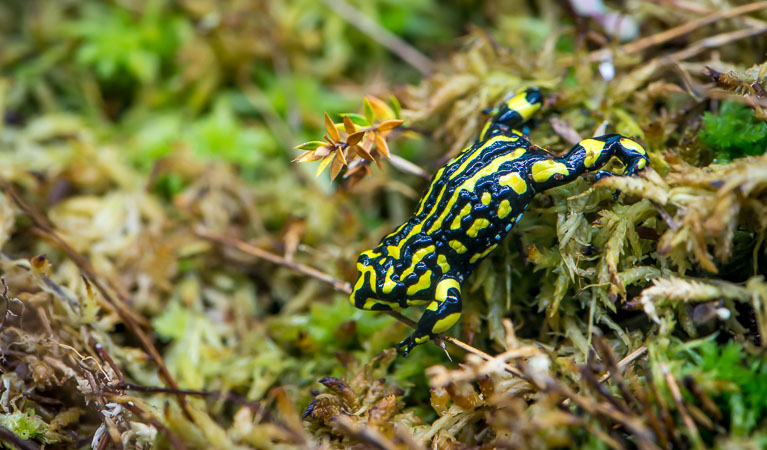
Only 50 southern corroboree frogs are thought to exist in the wild. Photo: NSW National Parks.
A pair of frogs typically lay between 16 and 38 eggs in a ‘clutch’, but it’s not enough to combat the effects of this disease, to the point a mere 50 southern corroboree frogs are thought to exist in the wild.
In 2001, Zoos Victoria’s Melbourne Zoo and Healesville Sanctuary – together with Taronga Zoo – united to arrest the decline and kick start a breeding program, with assistance from the NSW Department of Climate Change, Energy, the Environment and Water (NSW DCEEW).
NSW DCEEW senior threatened species officer Dr David Hunter says the aim is to maintain a population. At the same time, researchers work out a way to help the corroboree frogs build up natural immunity to the fungi.
“The reality is we’re probably never going be able to get rid of the fungus out of the Australian environment.”
Every year, they release an average of 2000 eggs directly into pools at various sites across the national park, including former known breeding sites and recently constructed disease-free field enclosures.
This year’s number of 3407 eggs, released between April and June, is an increase of 70 per cent and the biggest so far.
Dr Hunter says the egg-release program and a captive breeding population across the three zoos have prevented the “complete extinction of one of Australia’s most iconic frog species”.
“This program has maintained small numbers of breeding adults at former known sites and larger numbers – several hundred – in the disease-free field enclosures,” he says.
“Furthermore, this program has provided information and techniques that are being used to protect other frog species in a similar situation.”
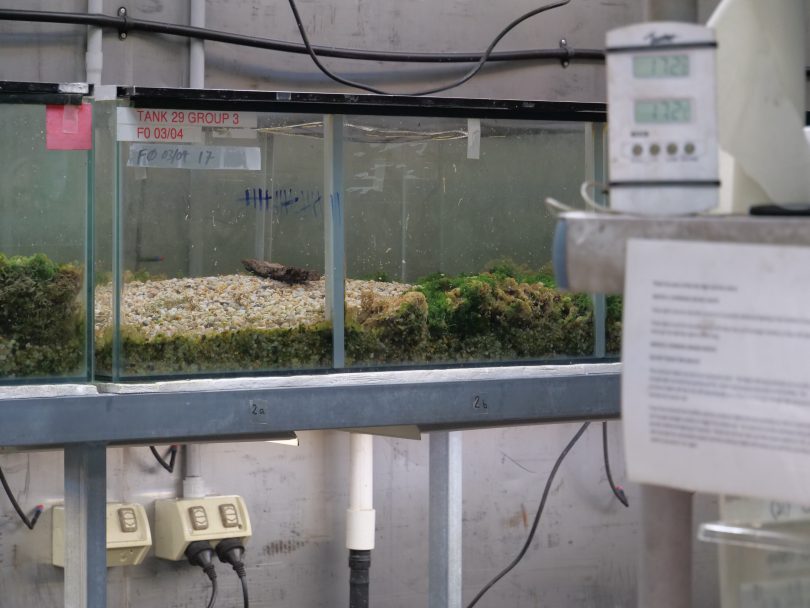
Captive breeding populations of the northern corroboree frog are kept at the Tidbinbilla Nature Reserve. Photo: ACT Parks.
With the southern corroboree frog historically only found within the Snowy Mountains region of the Kosciuszko National Park, Dr Hunter says there are no plans to release the species outside of this area, despite the fact other locations might be more accessible.
“One of the key reasons the fungus has such a big impact on the southern corroboree frog is because there’s another frog in the shared environment called the common eastern froglet, and it acts as a key reservoir host, facilitating the spread of the fungus,” he says.
This is also why prospects are even better in the Brindabella National Park, where Taronga Zoo releases a similar number of northern corroboree frog eggs.
“There are a few areas where there’s very limited common eastern froglet numbers, and the fungus isn’t having as big an impact.”
Just over the border in the ACT, the local government is conducting a breeding and egg-release program within the Tidbinbilla Nature Reserve, including the construction of five special outdoor enclosures. In early April 2024, ecologists spotted several frogs in the wild for the first time in five years.
Dr Hunter says he’s “very upbeat” about the future of the iconic frog.
“We really did have a bit of a crisis on our hands – we were staring down the barrel of losing the frogs forever. But we’ve now got the population secure and a whole range of things we’re doing to keep it alive in the wild.”
Original Article published by James Coleman on Riotact.







